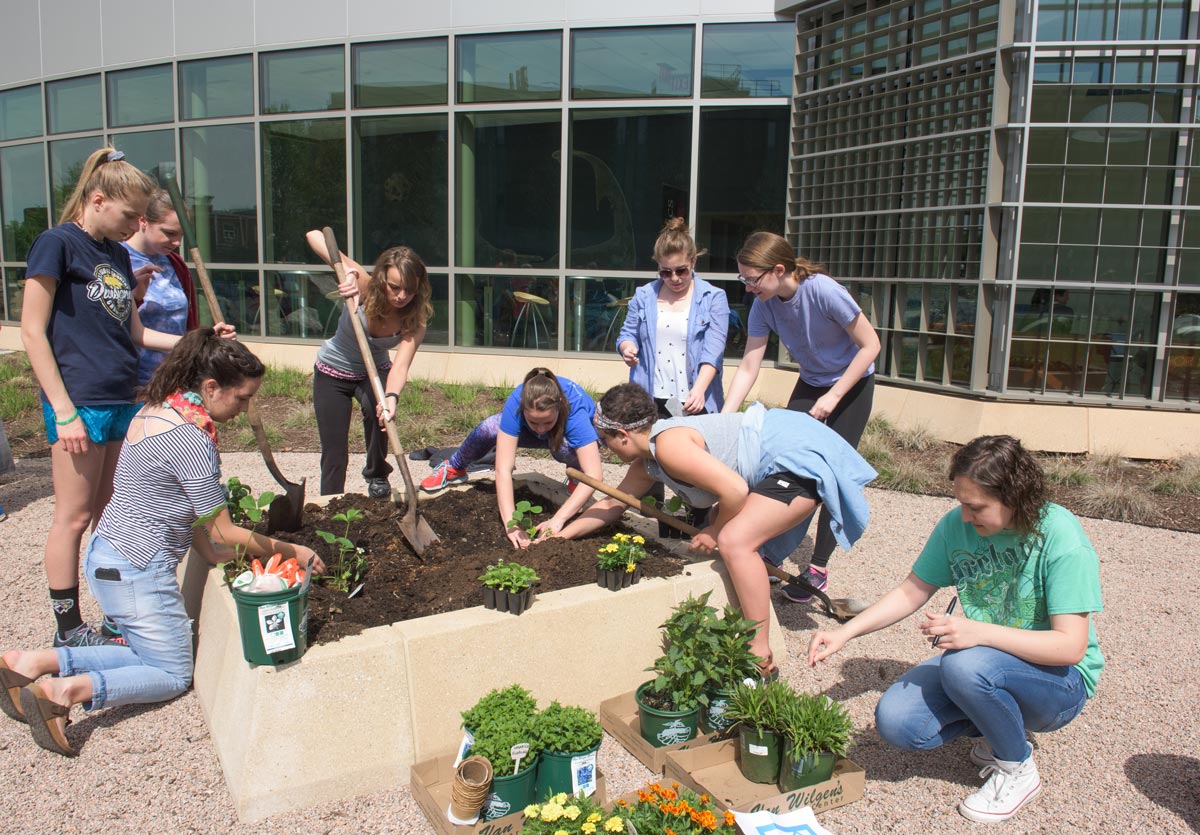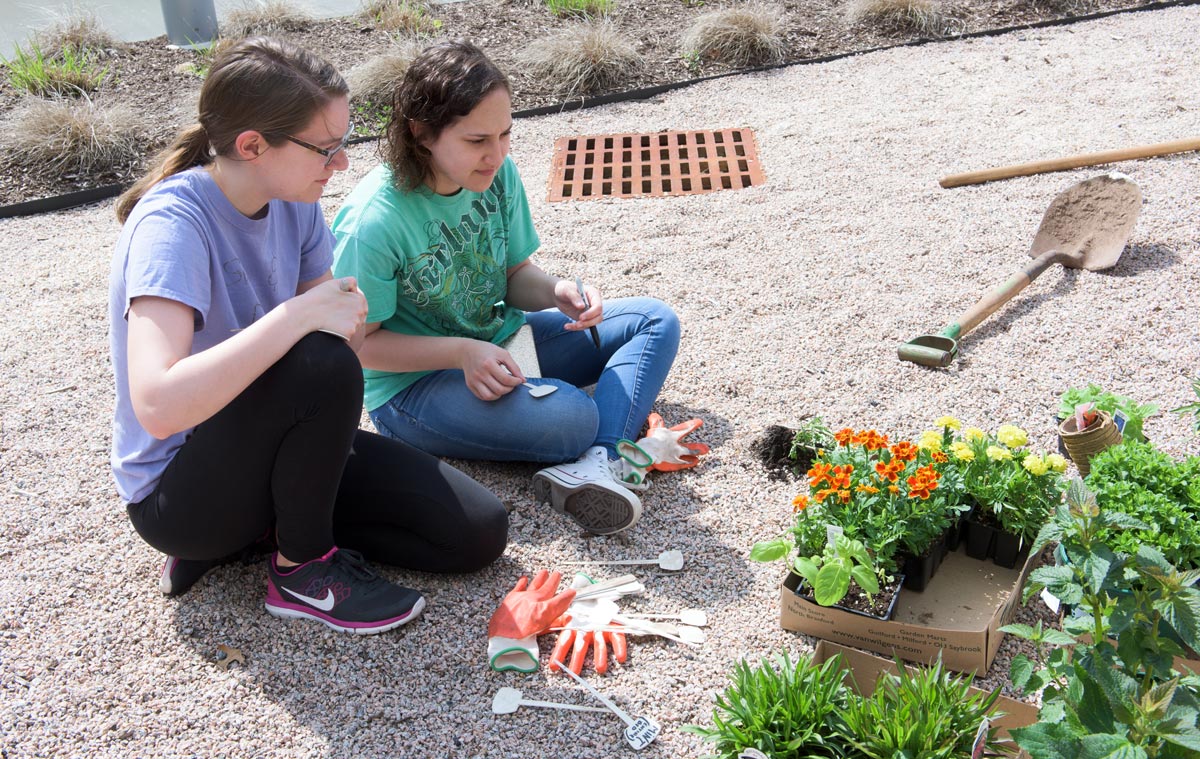As the school year draws to a close, Southern students may be leaving campus, but not before they put down some roots.
A new campus installation – the Science Garden – is now in place near the Academic Science and Laboratory building, thanks to the efforts of students, faculty, and campus leaders. Susan Cusato, associate professor of science education and environmental studies, worked with students in one of her classes this semester to explore ideas for the garden, and students presented their ideas as part of their course work. In addition, Botany Club students contributed to the garden planning during the conceptual phase and grew some plants for the garden from seeds.
The Science Garden is composed of three primary raised beds, each of which is 4’8” x 4’8”. The beds are located in the courtyard between the new science building and Jennings Hall. Cusato’s students — Honors College students in HON 260: Pollinators — A Case Study in Systems Thinking and Sustainability — installed the garden on May 10. Students and faculty have taken responsibility for maintaining the garden, which has the potential to benefit several science departments as well as honeybees and other pollinators. The Office of Sustainability will maintain the beds during the summer.
Cusato says that she and Sustainability Coordinator Suzanne Huminski have taught the pollinators course together for about four years, and this year Cusato taught it on her own. The course is designed around the issues surrounding the decline of all pollinators worldwide but especially the threats to honeybees, because they are responsible for the pollination of much of our food supply.
As Cusato explains, pollinators face many threats, including pesticides, climate change, and mites, among, “but one thing we can do to help is help preserve their habitat. So planting pollinator habitat is something the students learned to research and design.”
In the class, students worked in pairs to design pollinator habitats. With help from some Southern faculty and community members, the students considered how to enhance the campus’ pollinator habitat by planting pollinator-friendly plants in gardens near the science building. The goal of the plantings is to attract bees, butterflies, birds, moths, and other species.
Cusato says, “We are hoping that by enhancing habitat, students can begin to study the various pollinators on campus, can begin counts of specific pollinators and begin to examine the relationships between plants and pollinators. Students can collect and compare different pollen for specific traits. Blossoms can be analyzed for various compounds resulting in scent. As pollinators are attracted by scent, some plants have evolved intriguing ways to attract them, as the continued survival of that species depends on pollination.”
The planting of the garden is especially timely, given the fact that Governor Malloy recently signed legislation to protect pollinators, particularly in the area of preserving and developing pollinator habitat. The bill he signed had been unanimously passed by the Connecticut House of Representatives and addresses a range of concerns relating to pollinator health, from pesticides to parasites and habitat remediation.
Rebecca Silady, assistant professor of biology and faculty adviser to the Botany Club, credits the students in the pollination class with finalizing the details of the garden and with the actual planting of the garden, although she adds that Botany Club students took part in initial discussions about the garden and grew tomatoes, zinnia, and marigolds from seeds to contribute to the beds. Silady says the garden adds to the plant diversity on campus that she will be able to highlight in her course on plant taxonomy in the fall.



